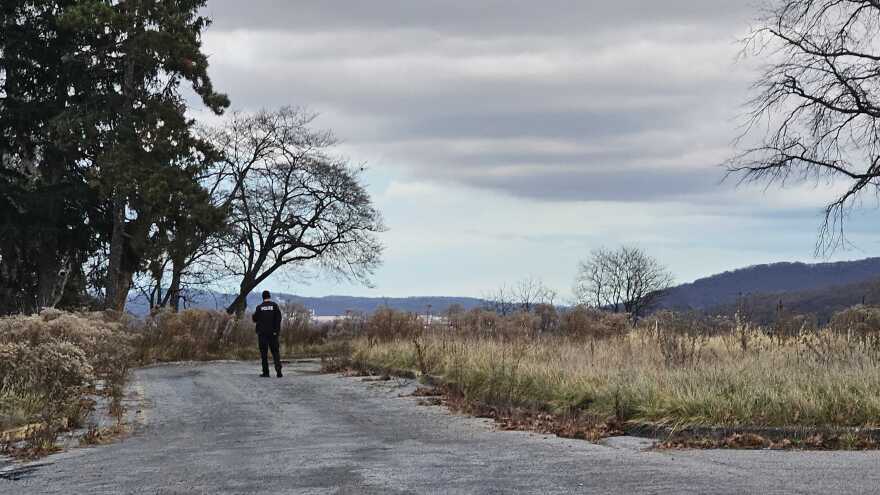ALLENTOWN, Pa. — The massive redevelopment planned for the old Allentown State Hospital site can start to take shape after city officials rezoned it Wednesday night.
Allentown City Council by a 4-3 vote approved a “mixed-use overlay district” that provides the zoning framework for City Center's ambitious project.
The ordinance passed with support from Council President Daryl Hendricks and members Candida Affa, Cynthia Mota, and Santo Napoli.
Ed Zucal, Ce-Ce Gerlach, and Natalie Santos voted against the new overlay district, which allows the developer to build housing, retail, and more on the site that was — until Wednesday night — restricted to institutional and governmental uses.
Their votes represented the first dissent from officials since City Center embarked on the approval process in August.
The Allentown City Planning Commission unanimously recommended the ordinance’s approval while the Lehigh Valley Planning Commission urged City Center not to under-develop the site amid a housing shortage in the region.
The Allentown State Hospital was built in 1912 and served as a psychiatric hospital until 2010. Most buildings on the state-owned land were demolished in December 2020.
"This project was foisted on the people of Allentown when the state sold this property to a single developer for a pittance.”Arnaud Armstrong, resident
City Center bought the 195-acre property in September 2022 for about $5.5 million after then-state Sen. Pat Browne helped push the deal through.
‘Missing’ middle?
The site on Allentown's East Side is one of the largest undeveloped tracts of land in the city, the developer has said.
Company executives have said the new development would include apartments, townhouses, duplexes/triplex/fourplexes, cottages, single-family homes, and senior living options to address what they are calling the “missing middle” of the real estate market.
But Gerlach on Wednesday questioned whether that sector of the market is what’s really missing in Allentown.
“It is not possible for a private developer to build very-low-income housing without massive public subsidies."Charlie Schmehl, Urban Research and Development Corporation
She said some statistics indicate there is a surplus of homes for “middle-income" residents in the Lehigh Valley, while data from the National Housing Coalition show “that there's a deficit of housing for extremely low-income” residents.
“I'm not quite seeing how this [project] will address the high demand,” she said. “The high demand is for extremely low-income, very low-income, and low-income [housing].”
Charlie Schmehl, of Urban Research and Development Corporation, said the Lehigh Valley has “a severe housing shortage … of all types.”
The developer is optimistic that adding more than 1,000 “middle-income” units “will loosen up the housing supply so that … existing units will be available for people who need it.”
Smehl said, “No private developer on their own can meet the needs of the very-low-income population.”
“It is not possible for a private developer to build very-low-income housing without massive public subsidies,” he said. “That's true all across the country.”
‘Who’s going to help the poor?’
Many residents spoke Wednesday night, urging the council to consider how a huge development project on the East Side will impact residents who already live in the area.
“Which one of the families — the Butzes, the Jaindls, the Reillys — who's going to help the poor? Who's going to help those people?”Pastor Dan Blount
Pas Simpson told council they’d be “widening the gap” between wealthy and low-income residents by approving the new zoning rules for Northridge.
“As we build these new developments … we can’t keep neglecting the people that are here,” Simpson said. “Because those people, sooner or later, can't leave. So what are they going to do?”
“As we make decisions, let's make decisions for the people that are currently living here and the burdens that they face on a daily basis,” he said.
Phoebe Harris, an Allentown School District board member, questioned City Center’s projections that show the Northridge development will generate about $9.3 million in annual tax revenues once it’s fully built in about 10 years.
The district was supposed to get much more in annual tax revenues from projects in the city’s Neighborhood Improvement Zone, she said, calling City Center's projections “another bait-and-switch.”
“How do I know that we’re really going to get that money for the school district?” she said.
Pastor Dan Blount challenged Allentown’s prominent developers to “do something for the homeless,” looking toward City Center President J.B. Reilly as he spoke.
“Which one of the families — the Butzes, the Jaindls, the Reillys — who's going to help the poor? Who's going to help those people?”
“Do something for the homeless; do something for the people who are less fortunate than those who have,” Blount said. “If the rich was to look out for the poor, it would wipe out poverty.”
Arnaud Armstrong urged council to reject the rezoning because “this project was foisted on the people of Allentown when the state sold this property to a single developer for a pittance.”
“Council should send a clear message and refuse to rezone this property and pursue organic development options instead,” he said.


